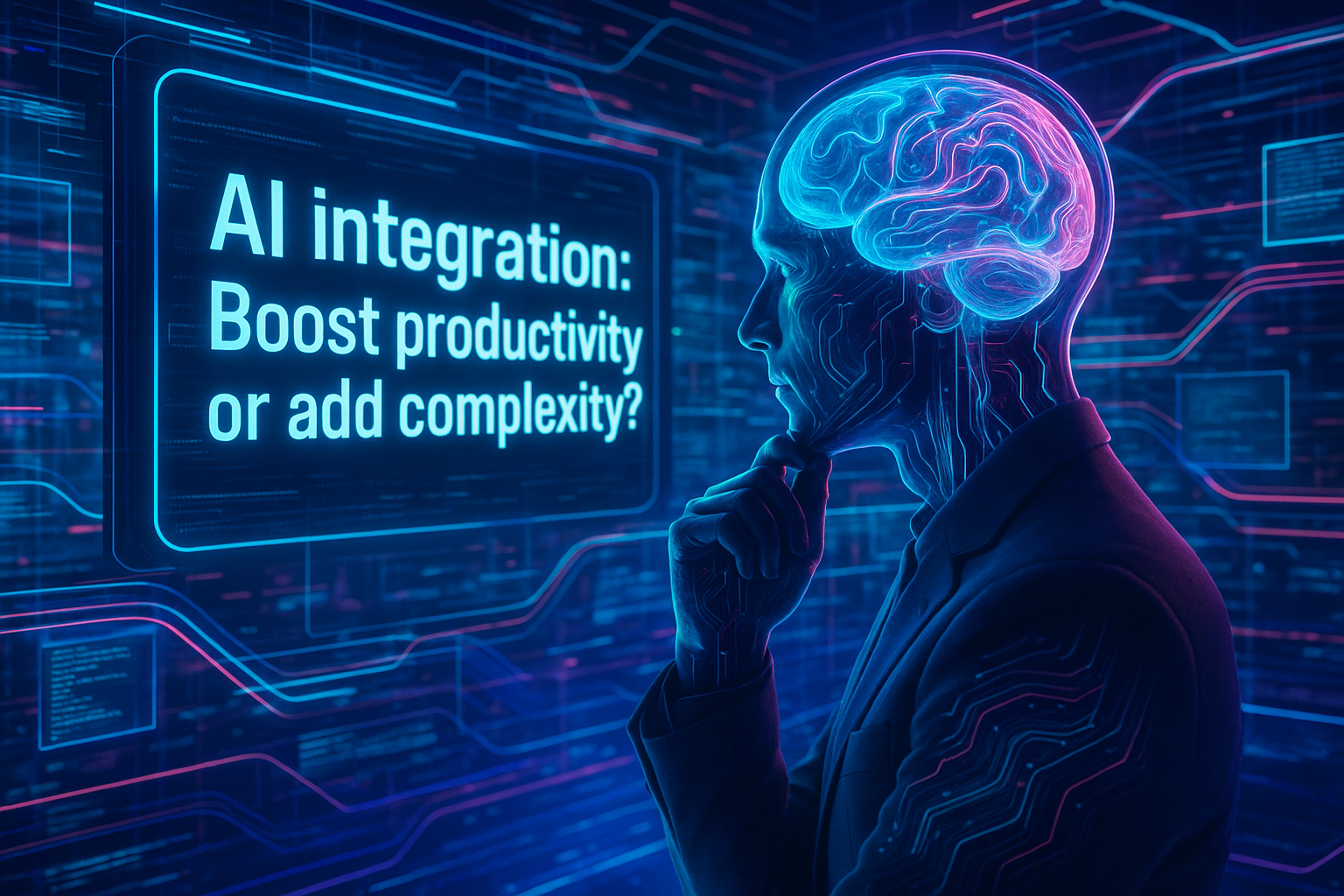
AI in the Workplace: Efficiency Booster or Overhyped Distraction?
“`markdown
# Embracing AI: Transforming Workflows without Complications
As artificial intelligence becomes increasingly integrated into workplace dynamics, businesses face the pressing challenge of ensuring these systems enhance productivity rather than add layers of complexity. While organizations rush to adopt AI tools, questions arise: Are these systems genuinely beneficial, or do they burden employees with additional complexities under the guise of efficiency?
## Navigating the AI Landscape
The path to integrating AI into business processes is fraught with challenges. A Pew Research Center report highlighted that while AI is great for speeding up tasks, it doesn’t necessarily improve work quality. Similarly, a survey by Gartner showed that even leadership struggles with the nuances of AI adoption. Yet, amidst these challenges, there is a consensus on how AI should ideally be integrated.
One such perspective comes from Doug Gilbert, the Chief Digital Officer at Sutherland, who warns against superficially bolting AI onto outdated tech stacks.
> “Organizations must avoid bolting AI onto legacy systems and instead integrate it with modernized processes,” Gilbert said.
The failure to align AI with existing infrastructures creates friction, frustrating employees and undercutting potential productivity gains.
### The Significance of Thoughtful Integration
Integrating AI into workflows without causing disruption is crucial. Gilbert stresses the importance of embedding AI thoughtfully into daily tasks to prevent it from becoming a cumbersome addition rather than a tool for efficiency.
> “AI should be deployed to remove friction from workflows, not add layers of complexity. The key is intentional integration.”
Davit Baghdasaryan, CEO and co-founder of Krisp, resonates with this approach, advocating for employee-first designs to be prioritized.
> “AI should integrate directly into existing workflows, minimizing disruptions rather than creating new processes or requiring extensive employee training.”
“Empathetic automation,” as Gilbert calls it, is the design of AI with human needs in mind. He underscores the importance of co-designing interfaces with frontline workers to ensure relevance and usability.
## Harnessing the Power of AI in High-Volume Environments
AI proves to be significantly effective in environments with repetitive tasks, such as contact centers or roles that require rapid decision-making. By doing so, it enhances speed, clarity, and responsiveness, reducing workloads without additional stress. However, a key challenge remains: avoiding information overload.
> “Organizations should invest in systems that focus on signal over noise. AI should distill large or complex information to empower employees with the most important and relevant information for their roles,” Baghdasaryan emphasized.
Similarly, a well-functioning AI should be a “smart curator,” integrating its insights within tools employees are already familiar with.
## Aligning AI Investment with Business Strategy
An often-overlooked step is aligning AI investments with business strategies and processes before onboarding systems. Dan Root from Barco ClickShare warns about the criticality of functional and intuitive design:
> “Leadership should compare the UX/UI of existing tools against new AI-enabled software to ensure employees resonate with functionality and can easily adopt the new tools.”
Gilbert reinforces that leadership must set realistic expectations and build a sustainable AI strategy, cautioning against the myth that AI can solve all problems.
## Avoiding Common Pitfalls in AI Implementation
A prevalent issue is the over-application of AI, driven more by hype than by actual needs. This misalignment can result in complexity, undermining productivity. Organizations should be discerning about their deployment of AI, leveraging appropriate tools for varied tasks:
– **Robotic Process Automation (RPA):** Best for structured, repetitive jobs.
– **Classical AI:** Suited for structured data analysis.
– **Generative AI:** Ideal for creative outputs.
– **Agentic AI:** Useful for complex coordination tasks.
> “By embracing intelligent automation over force-fitting AI, companies can amplify human strengths,” Gilbert asserted.
An emphasis on transparency about the AI journey is also crucial. Root emphasizes that executives should communicate the potential and existing challenges tied to AI adoption openly.
## Learning to Embrace AI as an Ally
AI should complement human work rather than seek to replace it. As Baghdasaryan pointed out, the best AI tools are those that support humans in real-time, adding value without taking control out of human hands.
> “The best tools support humans in real time by surfacing knowledge, reducing stress, and improving outcomes without removing human control.”
Organizations must define success metrics that include reduced context-switching and faster decision-making to ensure AI serves its purpose effectively.
Ultimately, AI’s successful implementation can transform it from a source of distraction into a powerful ally fostering productivity and innovation.
**How can your organization leverage AI to enhance productivity while ensuring seamless integration with existing workflows? What steps will you take to align AI solutions with your business strategy and employee needs?**
“`

